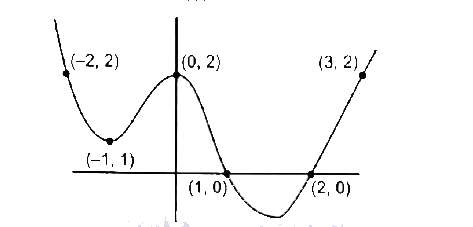Let are integer. If is a factor of both a. has imaginary roots b. has roots of opposite c. d .
Step by step video & image solution for Let P(x)=x^2+b x+cw h e r eba n dc are integer. If P(x) is a factor of both x^4+6x^2+25a n d3x^4+4x^2+28 x+5,t h e n a.P(x)=0 has imaginary roots b.P(x)=0 has roots of opposite c.P(1)=4 d .P(1)=6 by Maths experts to help you in doubts & scoring excellent marks in Class 11 exams.
Updated on:21/07/2023Similar Questions
Knowledge Check
If (x+6) is a factor of f(x)=x3+3x2+4x+P, then find the value of P.
A42B132C192D82For a polynomial p(x) of degree ≥1,p(a)=0 , where a is a real number, then (x−a) is a factor of the polynomial p(x)
p(x)=x3−3x2+4x−12 , then p(3) isA0B1C−1D2If (p2+2)x2+2p2x+(p2−4)=0 has roots of opposite sign, then find the range of p.
A(-2, 2]B[-2, 2]C(-2, 3)D(-2, 2)
Let X ~ B (n,P). I f E(X) = 5 and Var (x) = 2.5 find n and p
View SolutionIn the given figure graph of :
y=p(x)=xn+a1xn−1+a2xn−2+…..+an is given.

The product of all imaginary roots of p(x)=0 is:
View SolutionThe set of values of p for which (p−2)x2+7x+p2−4p=0 has roots of opposite signs are-
View SolutionFor what values of p the quadratic equation 3x2+12x+4p=0 has equal roots?
View SolutionGiven P(x) =x4+ax3+bx2+cx+d such that x=0 is the only real root of P'(x) =0 . If P(-1) < P(1), then in the interval [−1,1]
View Solution
